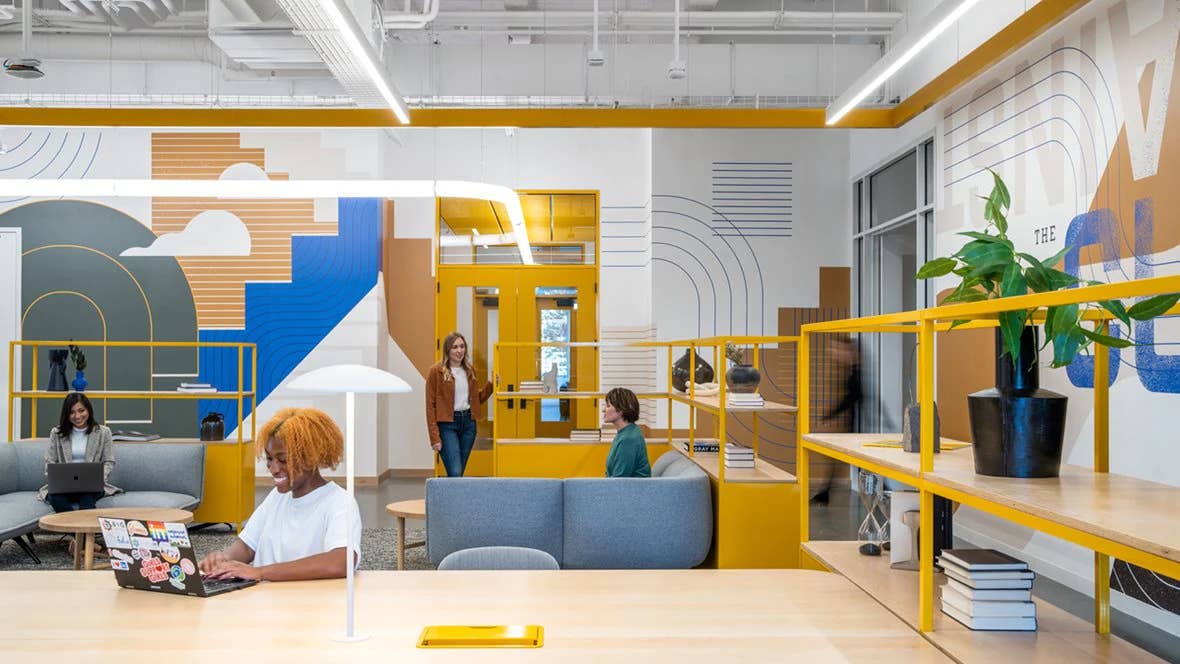An active workplace design can significantly improve workers’ behaviors
Physical inactivity and prolonged sitting are common issues among office workers, leading to various health risks and economic burdens.

Physical inactivity and prolonged sitting are common issues among office workers, leading to various health risks and economic burdens. While health promotion initiatives are essential, they alone are not enough to reduce sedentary time and increase physical activity. The design of workplaces also plays a crucial role in encouraging active behavior among employees.
Various models, like the socio-ecological model, highlight how multiple factors interact to influence workers' activity levels. These models emphasize the significant impact of the workplace environment on these behaviors.
Studies have shown that physical environmental factors within and outside the workplace can promote physical activity among employees. However, there are still gaps in the existing research that need further exploration.
Recently, researchers from the Japan Advanced Institute of Science and Technology (JAIST) identified three major gaps in understanding how workplace design affects sedentary and active behaviors among employees.
The research team, led by Associate Professor Mohammad Javad Koohsari from JAIST, included experts from Waseda University, Deakin University, the University of South Carolina, Bunka Gakuen University, Kyoto University, Tohoku University, and the University of Calgary. Their study was published in the British Journal of Sports Medicine.
Dr. Koohsari and his team reviewed existing literature to emphasize the importance of addressing these gaps and to propose future research directions. "We have focused on the interactive effects of workplace norms and culture, and the spatial layout of buildings on workers’ behaviors, along with the need for accurately measuring these behaviors," Dr. Koohsari explained.
One key area of interest is how workplace norms and culture influence sedentary behaviors and how workplace design can affect these behaviors. Most studies in this area have been conducted in Western settings, so cross-cultural research is needed to understand these dynamics in different geographical contexts.
Related Stories:
This will ensure that workplace interventions are culturally relevant. Additionally, the extension of workplace norms to remote and hybrid work environments should be explored.
Accurately measuring active and sedentary behaviors and identifying where these behaviors occur is essential for understanding the impact of workplace design on workers. While GPS combined with accelerometers is commonly used, the signals are less accurate indoors.
An indoor positioning system (IPS), using low-cost Wi-Fi and Bluetooth, can precisely locate people within indoor environments. When integrated with activity-tracking wearable devices, IPS can collect data on workers’ movements, activity intensity, and other biometric information. Combining IPS with geospatial AI (GeoAI) to analyze geospatial data can precisely locate workers within workplaces and analyze their movement patterns.
Previous studies have looked at the impact of isolated design elements on movement and behaviors. However, the overall building layout, which includes the spatial arrangement of walls, doors, windows, and access routes, significantly defines the functionality of interior spaces. It remains unclear which workplace layouts promote active behaviors among employees.
Space syntax theory, a method of quantifying spatial layouts using graph-based estimators, could address this gap. "By considering the spatial layout of a whole building rather than only individual design elements, space syntax could be used to study how factors like the locations of common spaces and workstation arrangements impact workers’ movements and behaviors," Dr. Koohsari noted.
As digitalization and automation continue to evolve, sedentary behaviors among office workers are likely to increase. Dr. Koohsari emphasized, "Future studies should examine the interactive effects of workplace norms and culture on behavior and conduct cross-cultural studies to identify similarities and differences. Innovative measurement methods can also be employed to accurately measure behaviors and locations where those behaviors occur within workplaces. Additionally, exploring the influence of spatial layout, and utilizing space syntax, can offer valuable insights into the design of work environments that facilitate workers' engagement in active behaviors."
By considering the interactive effects of workplace norms and culture, accurately measuring behaviors and locations, and utilizing space syntax to understand spatial layouts, we can create workplaces that promote physical activity and reduce sedentary behavior. This, in turn, will enhance the well-being and productivity of workers.
For more science and technology stories check out our New Discoveries section at The Brighter Side of News.
Note: Materials provided above by the The Brighter Side of News. Content may be edited for style and length.
Note: Materials provided above by the Western Sydney University. Content may be edited for style and length.
Like these kind of feel good stories? Get the Brighter Side of News' newsletter.
Rebecca Shavit
Science & Technology Journalist | Innovation Storyteller
Based in Los Angeles, Rebecca Shavit is a dedicated science and technology journalist who writes for The Brighter Side of News, an online publication committed to highlighting positive and transformative stories from around the world. With a passion for uncovering groundbreaking discoveries and innovations, she brings to light the scientific advancements shaping a better future. Her reporting spans a wide range of topics, from cutting-edge medical breakthroughs and artificial intelligence to green technology and space exploration. With a keen ability to translate complex concepts into engaging and accessible stories, she makes science and innovation relatable to a broad audience.



